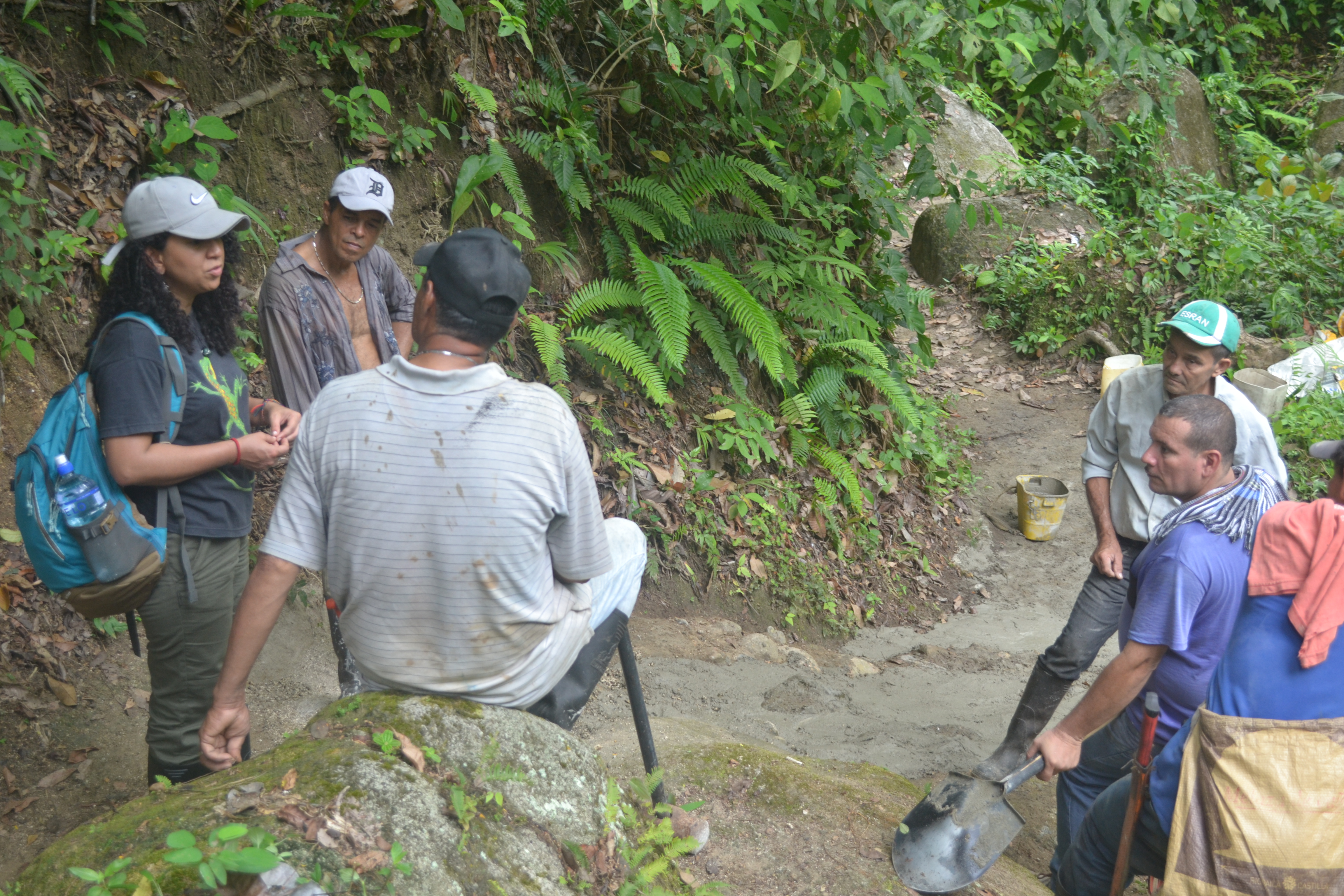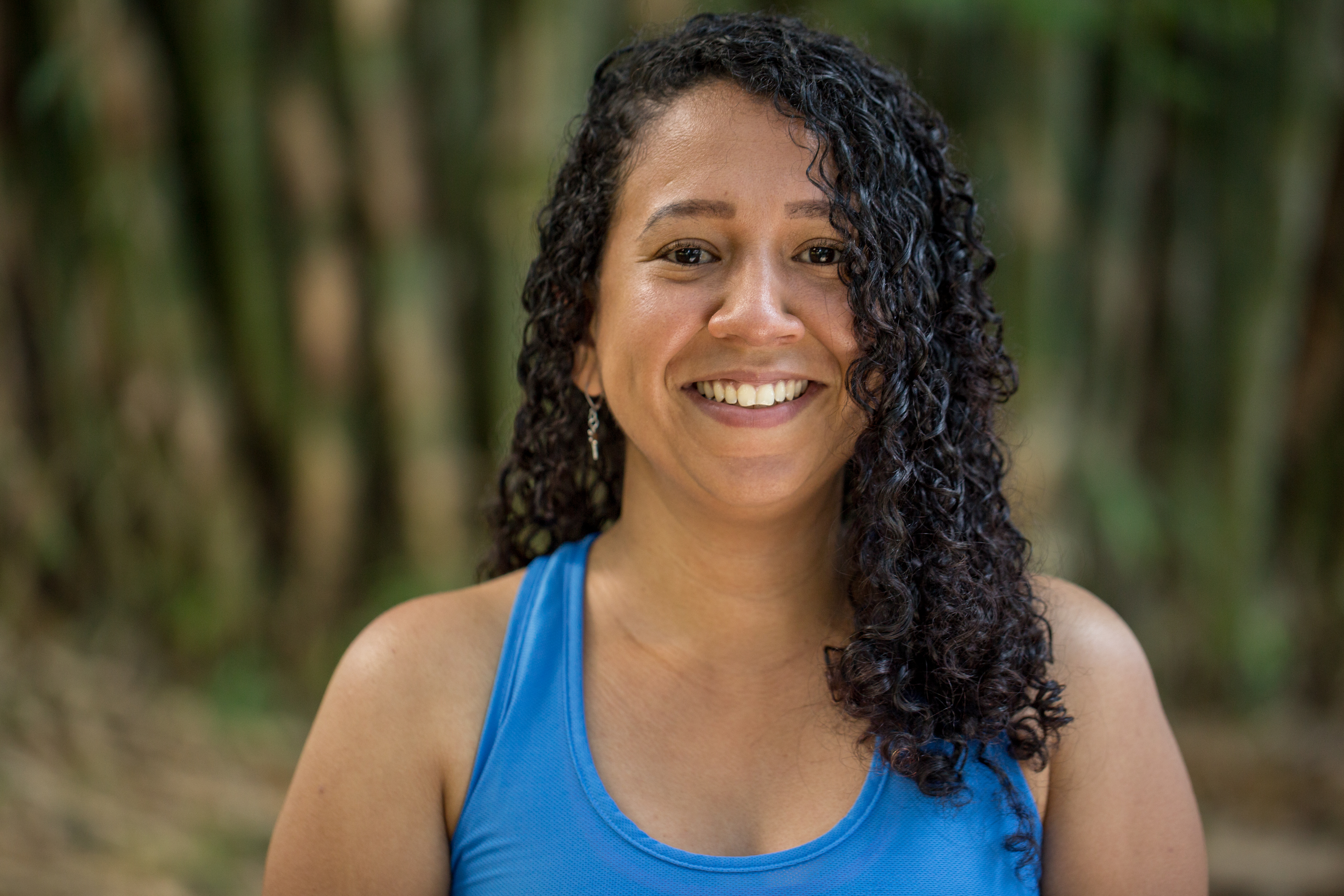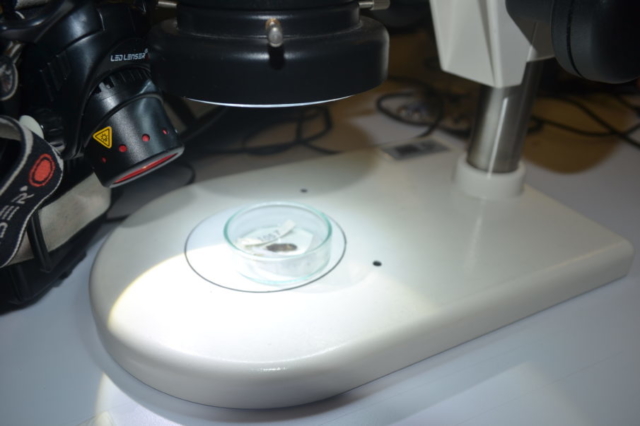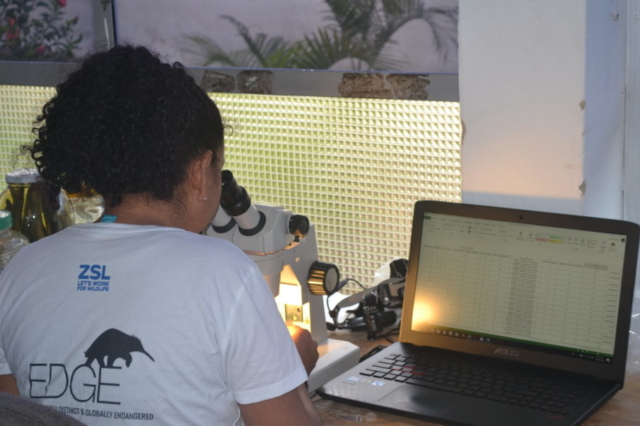Liliana Saboyá Acosta is one of our Segré EDGE Fellows who is working to protect the Colombian dwarf gecko (Lepidoblepharis miyatai). Alongside her team, she hopes to understand the species’ habitat requirements and engage rural and indigenous communities to help conserve the gecko which is found in Northern Colombia.
Liliana believes that the gecko, although unknown to many locals, is a unique and important part of Colombia’s natural heritage. She is particularly fascinated by the role it plays in its ecosystem – the tropical dry forest. In these forests, small organisms (like geckos) act as both predators and prey, helping to maintain the forest’s community dynamic. Through her work with indigenous communities, Liliana is striving to better understand her EDGE species and engage locals to eliminate their myths and fears about geckos.
When asked to describe one thing she loves about her EDGE species, Liliana beams:
“I love that cute face that this small gecko has, because is like: “Hey look at me, I´m rude but cute!” This [Colombian dwarf] gecko has some scales over its eyes that give the impression of it always frowning.”
In the first six months of her Segré EDGE Fellowship, Liliana and her team have worked hard to determine the natural distribution of the Colombian dwarf gecko by reviewing museum collections of reptiles from four of Colombia’s museums; Universidad de los Andes, Universidad Javeriana, Universidad del Magdalena and Instituto de Investigaciones Alexander von Humbold. Liliana explains the reason for scouring museum collections:
“In these places, we have identified 12 specimens that correspond to Lepidoblepharis miyatai and in some cases have been mistakenly identify as Lepidoblepharis sanctaemartae. With this information we have gained a preliminary view of the potential distribution of the species. We also have collected information on the morphology of the specimens, helping us to better understand the different character variations the specimens show.”
Of course, her work has also taken her into the field, where she has been setting up pre-sampling surveys to collect data on the dwarf gecko’s micro-habitat preferences and activity patterns:

Reflecting on her Fellowship so far, Liliana recounts her highlights:
“I think that all the accompaniment by ZSL, the training course and the personalized sessions that have been dedicated to each one of us as Fellows have been of great help in this long road that we have ahead to achieve our goals. In my personal case, I feel more confident that I will be able to reach my project purpose which is to improve the ecological knowledge and to build the foundation of a conservation plan with communities and institutions (public institutions) for L. miyatai.”
And challenges:
“A challenge has been trying to contact indigenous groups – there is a process to accomplish with them. We are working hard to achieve the inclusion of at least two communities and have the opportunity to learn from their ancestral knowledge about reptiles.”
Like any aspect of scientific conservation work, it’s not as glamorous as it may appear. Liliana recalls her time examining the mountain of museum reptile specimens:
“When you work reviewing specimens of museum reptiles, you only see scales, scales, scales and more scales. Therefore, during the first visit to the museum of the Andes in Bogota, we were reviewing a small group of 11 specimens classified as Lepidoblepharis. We spent around two to three days looking at the shapes of scales, counting scales and measuring individuals. We were sad because the probability of finding a Lepidoblepharis miyatai was remote. Then, when we finally found a specimen that corresponded to the species, my partner and I reviewed it a thousand times just to make sure. Finally, we were able to jump for joy as we had found the needle in the haystack!”
It appears that Liliana has learnt a lot during her Fellowship so far from how to develop, co-ordinate and budget her project to how best to bring in environmental groups and indigenous communities to help conserve her critically endangered EDGE species. There is however so much more to come as she progresses through her Segré EDGE Fellowship – be sure to keep up-to-date with her project and her EDGE species!

Liliana Saboyá-Acosta is an EDGE fellow with the Zoological Society of London, working with an endemic and critical endangered species of lizard, the Colombian dwarf gecko, Lepidoblepharis miyatai. She is studying for a Ph.D. in environmental and rural studies from Pontifix Javeriana University. As a conservationist, she is interested in the ecological relationships between animals (mainly amphibians and reptiles) and tropical ecosystems and the impact caused by human activities.
Liliana is focused on the natural heritage of her country through conservation programs that include communities and traditional knowledge as a tools for the preservation of ecosystem biodiversity.
She has been working with amphibians and reptiles distributed in extreme ecosystems like Paramos and Tropical Dry Forest in different projects with Colombian institutions like Universidad del Magdalena, Instituto de Investigaciones Alexander Von Humboldt, Selva NGO, Caribbean Heritage Foundation and Ecorref Foundation. In 2009 she was part of the program “COLCIENCIAS Young research” where she participated and have contributed in national and international seminars, and published papers in high-profile scientific journals.

